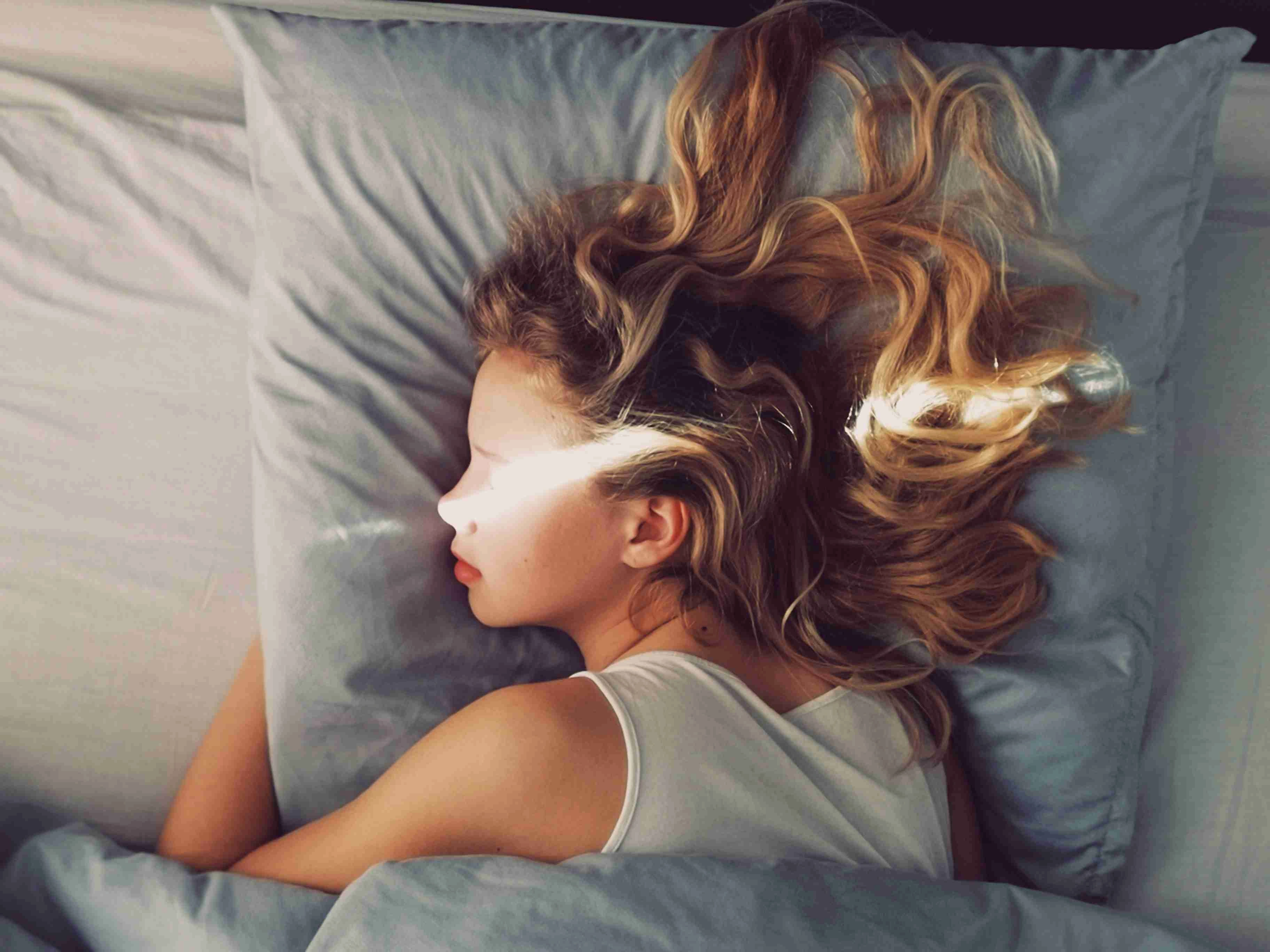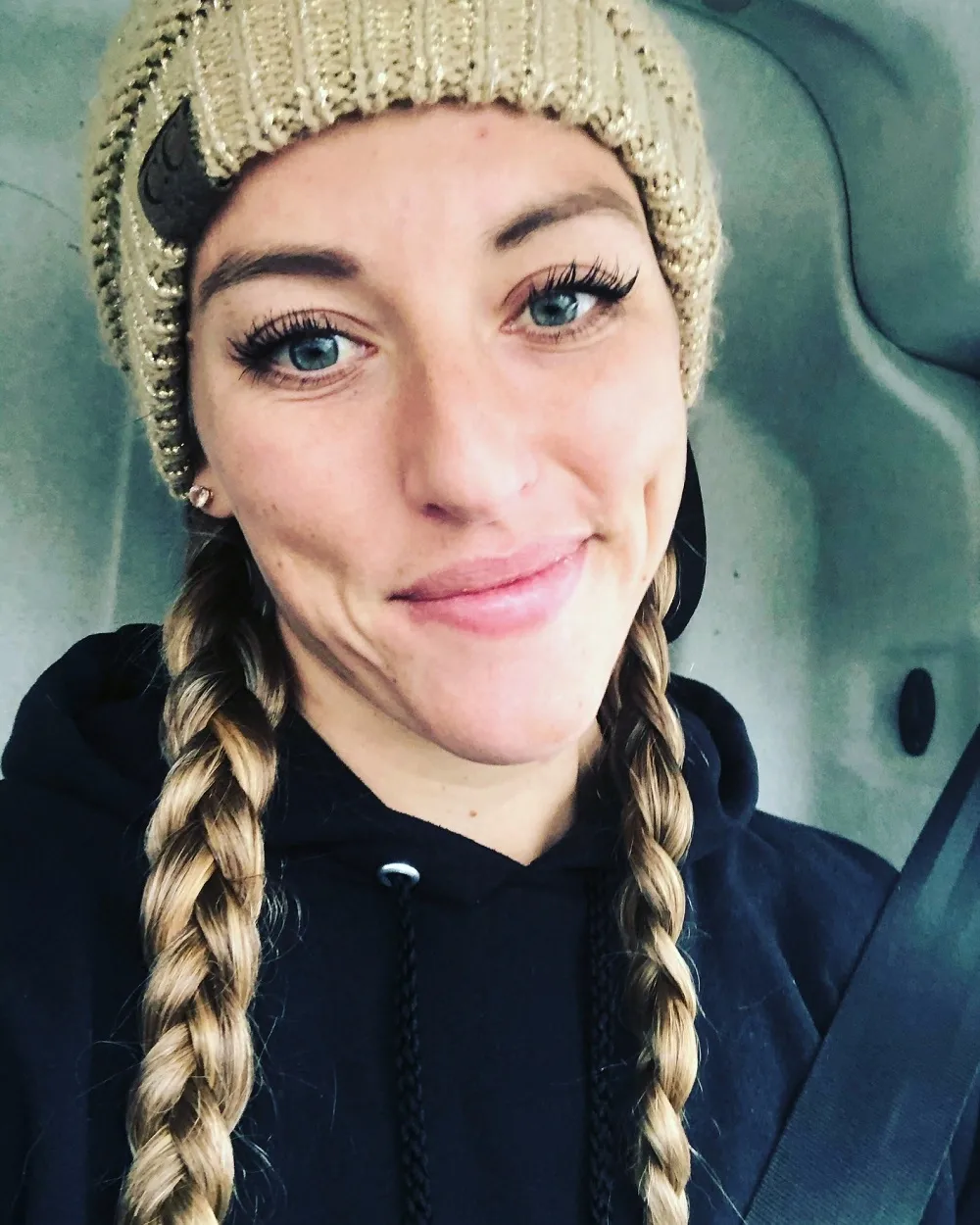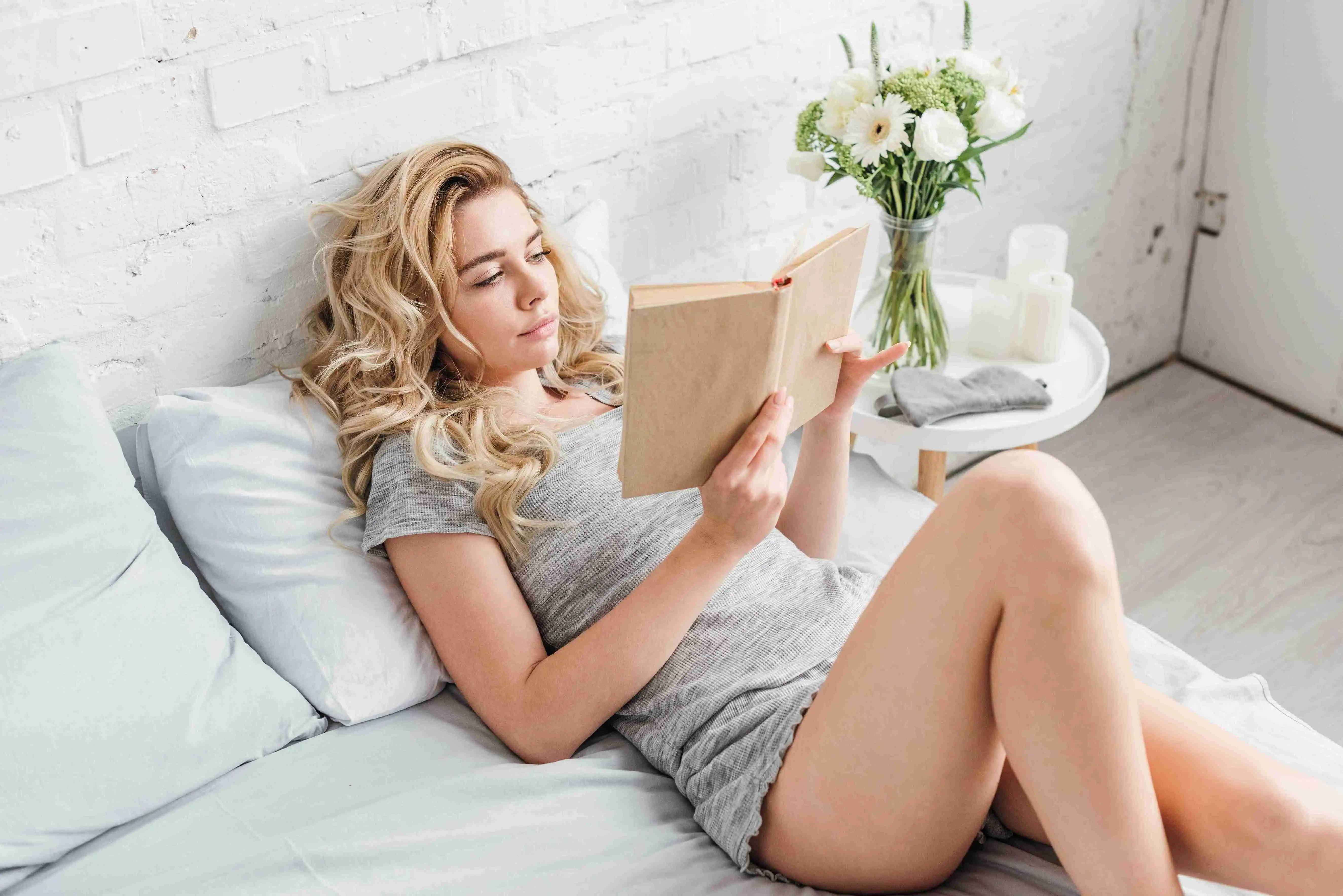Sleep is essential for overall health, yet the language surrounding sleep can often be confusing, making it difficult to understand how sleep works.

This guide aims to clarify key sleep-related terminology, providing clear definitions to help you navigate the often complex world of sleep science. By understanding these terms, you can make more informed decisions about your sleep habits and take advantage of evidence-based information to improve your well-being.
A – E
- Actigraphy: Monitoring body movement over time. Wearable devices can track activity, including sleep, and measure the duration of various activities.
- Acute: Refers to something short-term, sudden, or severe. In sleep disorders, it is often used to distinguish from chronic conditions.
- Arousal: A sudden transition from deep to light sleep or from sleep to waking. Arousal can be detected by changes in heart rate, breathing, or muscle movement.
- Aromatherapy: The use of scents to impact physical or mental well-being. For sleep, aromatherapy typically involves scents meant to encourage relaxation or alertness.
- Atonia: A temporary paralysis of most muscles during REM sleep, which prevents movement except for those controlling breathing, heart rate, and eye movement.
- Awakenings: The act of waking from any sleep stage. Changes in heart, lung, brain, and muscle activity may be used to detect awakenings.
- Bad Dream: A nightmare or disturbing dream that doesn’t cause awakening.
- Bilevel Positive Airway Pressure (BiPAP) Device: A machine that pumps pressurized air through the nose or mouth to maintain an open airway, commonly used for obstructive sleep apnea. Air pressure varies for inhalation and exhalation.
- Biphasic Sleep: A sleep pattern with two segments of sleep, typically one at night and another as a daytime nap.
- Blue Light: Light with a particular wavelength emitted by many electronic devices and LEDs, which can affect circadian rhythms more than other light wavelengths.
- Chronic: Long-lasting or persistent. In sleep disorders, contrasts with acute conditions.
- Circadian Alerting System: A system of signals from the brain that promotes wakefulness and regulates sleep-wake cycles.
- Circadian Pacemaker: A brain region, the suprachiasmatic nucleus (SCN), that controls the circadian rhythm and regulates bodily functions, influenced primarily by light exposure.
- Circadian Rhythm: Circadian Rhythm is the body’s internal clock, typically on a 24-hour cycle, that coordinates physical and mental functions, including sleep.
- Chronobiology: The study of natural rhythms, including circadian rhythm, that affects living organisms.
- Chronotype: A person’s natural sleep-wake pattern, reflecting their unique circadian rhythm preferences.
- Cognitive-Behavioral Therapy for Insomnia (CBT-I): CBT-I is a form of therapy aimed at changing negative thoughts about sleep and fostering healthier sleep habits.
- Cognitive Impairment: Difficulties with mental processes like memory, attention, reaction time, and judgment.
- Continuous Positive Airway Pressure (CPAP) Device: A CPAP is a machine that delivers continuous air pressure through the nose or mouth to keep the airway open, commonly used for obstructive sleep apnea. The air pressure remains constant during both inhalation and exhalation.
- Daytime Impairment: Negative effects on cognitive, physical, or emotional functioning due to sleep disturbances during the day.
- Deep Sleep: The final stage of NREM sleep, is characterized by low heart rate, slow brain activity with delta waves, and the deepest relaxation of the body. Also known as stage 3, N3, or slow-wave sleep.
- Delta Sleep: The stage of NREM sleep marked by delta waves, considered the deepest stage, also called stage 3, N3, or slow-wave sleep.
- Dream: Visual or mental experiences during sleep, occurring most vividly in REM sleep. Dreams can range from pleasant to distressing and are often forgotten upon waking.
- Dream Recall: The ability to remember dreams after waking.
- Electroencephalograph (EEG): A test that records brain waves using sensors on the scalp. It helps identify different sleep stages and is used in polysomnography, a specialized sleep study.
- Entrainment: The process by which a person’s circadian rhythm aligns with the day-night cycle, primarily influenced by light exposure.
- Excessive Daytime Sleepiness (EDS): Excessive Daytime Sleepiness is a condition of feeling overly drowsy or unable to stay alert during the day.
F – L
- Fatigue: A sense of physical or mental exhaustion, often overlapping with excessive daytime sleepiness and cognitive issues related to sleep disturbances.
- Homeostatic Sleep Drive: The body’s internal system that increases the need for sleep the longer one stays awake, reaching its peak when it’s time to sleep.
- Hormones: Chemical messengers that regulate many bodily functions, including those that influence sleep, through the endocrine system.
- Hyperarousal: A state of heightened stress or alertness, linked to insomnia and difficulty initiating or maintaining sleep.
- Hypersomnolence: Extreme sleepiness at inappropriate times, often referred to as excessive daytime sleepiness.
- Hypersomnia: A sleep disorder marked by excessive sleepiness when awake, often referred to as hypersomnolence. Learn more about hypersomnia and its impact on sleep health.
- Hypnagogic: The transitional period just before falling asleep.
- Hypnogram: A graph showing the progression of sleep through its various stages, typically created during a sleep study.
- Hypnopompic: The period just before waking up from sleep.
- Hypnotic: A type of medication used to induce sleep.
- Hypopnea: Shallow or very slow breathing.
- Hypoxia: A condition where there is insufficient oxygen in the body, which can be a result of sleep-disordered breathing.
- Insomnia: A sleep disorder where an individual struggles to fall asleep or stay asleep, despite having the opportunity. Insomnia can lead to daytime impairment and is categorized as either acute or chronic.
- Insufficient Sleep: A state where the body or mind does not function optimally due to inadequate sleep duration or fragmented sleep.
- Jet Lag: A condition resulting from rapid travel across multiple time zones, causing a mismatch between circadian rhythms and the local light-dark cycle.
- Light Sleep: The initial stage of NREM sleep, where a person can be easily awakened. Sometimes used to refer to both N1 and N2 sleep.
- Light Therapy: A treatment involving exposure to bright light to help reset the circadian rhythm and alleviate certain sleep issues.
- Long Sleep: A sleep period lasting longer than what is recommended based on age and health.
- Lucid Dream: One of the most well-known dream types is a lucid dream, where the sleeper is aware they are dreaming and may even control the dream’s content.
M – R
- Melatonin: A hormone that regulates circadian rhythms and sleep, typically produced in response to darkness. It is available as a supplement or prescription aid for sleep.
- Metabolism: The process by which the body converts food into energy, affecting overall health, including sleep.
- Microsleep: Brief, involuntary periods of sleep, often lasting only a few seconds, are known as microsleep and are commonly associated with extreme daytime sleepiness.
- Monophasic Sleep: A sleep pattern where all daily sleep is consolidated into one sleep period.
- N1 Sleep: The first stage of NREM sleep, characterized by light sleep and easy awakening.
- N2 Sleep: The second stage of NREM sleep, is marked by deeper sleep but still easy to awaken from.
- N3 Sleep: The third stage of NREM sleep, also known as deep sleep, slow-wave sleep, or delta sleep.
- Nap: A short sleep taken outside of a regular sleep period, typically during the day. check out our article on the impact of napping.
- Natural Light: Light produced by the sun.
- Neurotransmitter: Chemicals that transmit signals between brain cells, influencing sleep and wakefulness.
- Nightmare: A distressing dream that causes the person to wake up and remember its content.
- Nocturia: The need to wake up and urinate during the night.
- Nocturnal: Events or activities occurring during the night Some sleep disturbances, such as nocturnal panic attacks, can harm your sleep quality and well-being.
- Non-Rapid Eye Movement Sleep (NREM): The first three stages of sleep, where brain and body activity significantly decrease.
- Partial Sleep Deprivation: A condition where a person gets less sleep than needed, but is not completely deprived.
- Pharmacotherapy: The use of medications, such as prescriptions, to treat sleep issues.
- Polysomnography: A specialized sleep study that tracks various physical factors like brain waves, muscle movements, and eye movements to diagnose sleep disorders.
- Positive Airway Pressure (PAP) Device: A device that uses pressurized air to help keep the airway open, commonly used for obstructive sleep apnea.
- Rapid Eye Movement (REM) Sleep: A sleep stage marked by intense brain activity and vivid dreams. Muscles are paralyzed during REM to prevent acting out dreams.
- REM Rebound: An increase in REM sleep after a period of deprivation. Rem rebound occurs when the brain compensates for lost REM sleep by increasing its frequency and duration in subsequent sleep cycles, highlighting the importance of consistent sleep patterns.
S – Z
- Screen Time: The duration spent using electronic devices such as mobile phones, tablets, laptops, computers, and televisions.
- Sedative: A substance or medication that promotes sleepiness or drowsiness.
- Shift Work: A type of employment requiring non-traditional working hours, such as evening or overnight shifts, differing from a standard 9 a.m. to 5 p.m. schedule. This work pattern can lead to shift work disorder, a circadian rhythm sleep disorder characterized by insomnia, excessive sleepiness, and impaired functioning.
- Short Sleep: Sleep duration that falls below the recommended amount for an individual’s age and health. People with such sleeping behavior are known as short sleepers and may function well on less sleep.
- Sleep Aid: A substance or a sleep medication used to help improve sleep quality. These can be prescription drugs, over-the-counter medications, or dietary supplements, and may include non-pharmacological methods like aromatherapy.
- Sleep Apnea: A sleep disorder characterized by abnormal or interrupted breathing. There are many types of sleep apnea, and these include obstructive and central sleep apnea.
- Sleep Architecture: The cycle of sleep stages, including NREM and REM sleep, is represented in a graph called a hypnogram.
- Sleep Bruxism: The involuntary clenching or grinding of teeth during sleep. This condition, commonly referred to as bruxism when it occurs during sleep, can lead to dental damage, jaw pain, and disrupted sleep.
- Sleep Continuity: The ability to sleep for an extended period without interruptions or waking up.
- Sleep Cycle: A series of stages through which the body progresses during sleep, including NREM and REM phases. An average person experiences 4-6 sleep cycles lasting 70 to 120 minutes each.
- Sleep Debt: The cumulative result of insufficient sleep over time.
- Sleep Deficiency: A condition where sleep duration or quality is inadequate, often referred to as insufficient sleep or sleep insufficiency.
- Sleep Deprivation: A lack of sleep that falls short of the recommended amount based on age and health is known as sleep deprivation and may also be referred to as sleep deficiency.
- Sleep Disturbance: An interruption that causes waking or arousal during sleep.
- Sleep Duration: The amount of time spent sleeping, which can be measured for a single sleep session or within 24 hours.
- Sleep Efficiency: The proportion of time spent sleeping during a sleep episode, calculated by dividing the total sleep time by the total time in bed.
- Sleep Environment: The setting in which a person sleeps, typically a bedroom, encompasses the mattress, bedding, and factors like ambient light, noise, smell, and temperature.
- Sleep Fragmentation: The disruption of sleep, involving multiple awakenings or arousals during a sleep period.
- Sleep Hygiene: Healthy habits and practices that support good sleep, including optimizing the sleep environment. Good sleep hygiene is a key part of addressing sleep problems.
- Sleep Inertia: The groggy or drowsy sensation experienced shortly after waking.
- Sleep Latency: The time it takes to fall asleep after going to bed.
- Sleep Maintenance: The ability to stay asleep for the desired duration after initially falling asleep.
- Sleep Onset: The act of falling asleep or beginning a sleep period.
- Sleep Pattern: A person’s typical sleep schedule, including bedtime, wake time, and any naps or sleep interruptions.
- Sleep Phase: The timing of a person’s usual sleep period, which may be advanced, delayed, or disrupted, and is often linked to the circadian rhythm.
- Sleep Quality: An individual's satisfaction with their sleep, which includes the ease of falling asleep, maintaining sleep, overall sleep duration, and how refreshed they feel upon waking. This is often based on subjective assessments.
- Sleep Regression: A period where an infant or toddler’s sleep worsens after a phase of improvement, commonly noticed by parents.
- Sleep Stages: The four sleep stages, including the NREM and REM stages, are identified through changes in brain and body activity during a sleep study.
- Sleeping Position: The posture a person adopts while sleeping, with the main sleeping positions being side (left or right), back (supine), and stomach (prone).
- Slow-Wave Sleep: A deep stage of NREM sleep, also known as stage 3 or N3, marked by slow brain waves, often referred to as deep or delta sleep.
- Somnolence: The state of feeling sleepy or drowsy.
- Snoring: The sound created by vibrations of the tissues at the back of the throat during sleep is called snoring, and when persistent, it is called chronic or primary snoring.
- Soporific: Inducing sleepiness or drowsiness.
- Suprachiasmatic Nucleus (SCN): A part of the hypothalamus that regulates the body’s circadian rhythms, often referred to as the circadian pacemaker.
- Time in Bed: The total duration spent in bed, regardless of whether sleep occurs. This term is commonly used in sleep studies to calculate sleep efficiency.
- Total Sleep Deprivation: Sleep deprivation is a period with no sleep at all, such as during an all-nighter.
- Total Sleep Time (TST): The amount of time spent asleep during a designated sleep period, including both REM and NREM sleep.
- Vivid Dream: There are several types of dreams. A vivid dream is a particularly clear and immersive dream experience.
- White Noise: A sound that consists of all audible frequencies at equal intensity, often perceived as a static-like noise, used to mask background sounds during sleep.
- Zeitgeber: A factor that helps align the body's circadian rhythm with the 24-hour day-night cycle, with light being the most powerful zeitgeber.
FAQs
How much sleep do I need?
While individual sleep needs may vary, most adults require between 7 and 9 hours of quality sleep per night for optimal health and performance.
Is it possible to "catch up" on missed sleep?
While catching up on sleep by taking naps or sleeping in on weekends can help alleviate some sleep debt, it's not a long-term solution. Establishing consistent sleep patterns is crucial for overall well-being.
Can sleep supplements be habit-forming?
While natural sleep aids like melatonin are generally considered safe for short-term use, it's essential to consult with a healthcare professional before using any supplements, as some may have potential side effects or interactions with medications.
How can I improve my sleep if I work night shifts?
Shift workers may benefit from strategies like maintaining a consistent sleep schedule, using blackout curtains or eye masks, and avoiding exposure to bright light before bedtime. Seeking support from healthcare professionals can also help manage circadian rhythm disruptions.
Can stress and anxiety contribute to sleep problems?
Yes, stress and anxiety can significantly impact sleep quality. Incorporating relaxation techniques, practicing good sleep hygiene, and addressing underlying mental health concerns can help improve sleep in these situations.
Conclusion
Sleep is a crucial aspect of maintaining good health, but the complex language used in sleep science can make it challenging to fully grasp how sleep works and how to improve it. By understanding the keywords in this dictionary, you can better navigate sleep-related terms.
Jessica H.
Jessica is a reviewer, writer, and sleep enthusiast at Sleepiverse. Jessica graduated with her master's degree in Nursing research and education. She is a registered nurse and currently works in the Intensive Care Unit. Since becoming a nurse, Jessica has worked the night shift, which means a disrupted sleep schedule. Knowing she needed to function at her best while caring for patients at night, she spent a lot of time researching how to sleep well with a difficult schedule.


